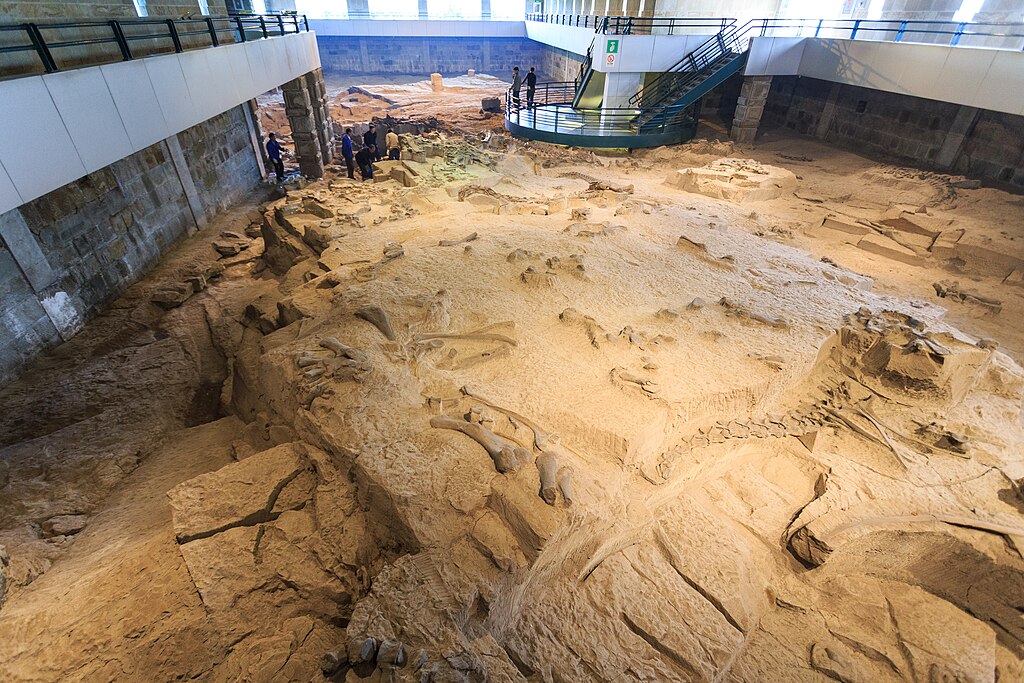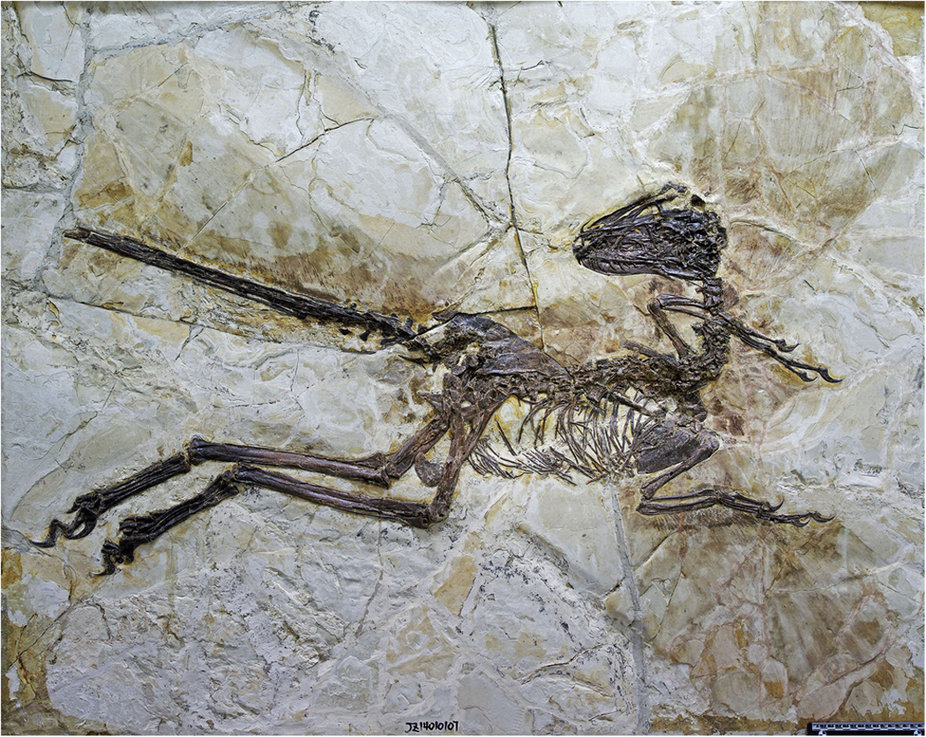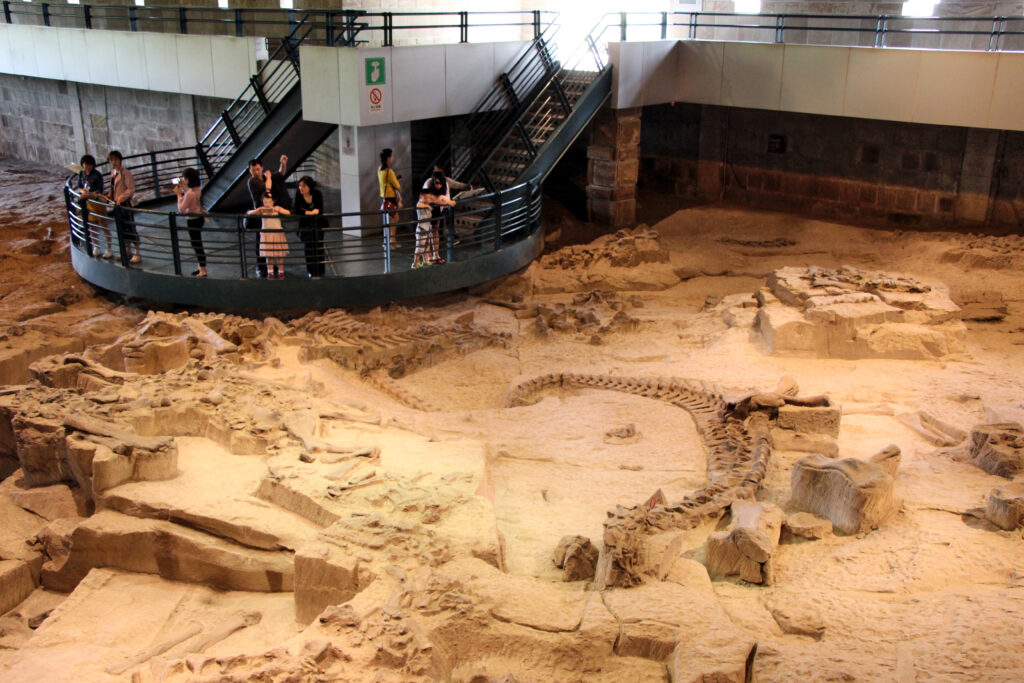The fascinating world of paleontology often conjures images of dusty academics meticulously brushing away sand from ancient bones. However, the reality of funding these crucial scientific endeavors is far more complex and, at times, surprisingly creative. While government grants and university endowments traditionally support paleontological research, some of history’s most significant dinosaur discoveries have been made possible through unconventional financial backing. From Hollywood directors passionate about prehistoric creatures to luxury brands seeking unique marketing opportunities, these unexpected funding sources have revolutionized our understanding of dinosaurs. This article explores nine remarkable instances where dinosaur digs received financial support from sources you might never have imagined, demonstrating how scientific discovery sometimes depends on unlikely partnerships.
Steven Spielberg’s Jurassic Generosity

Following the blockbuster success of “Jurassic Park” in 1993, director Steven Spielberg found himself with both newfound wealth and a heightened interest in actual paleontology. In what many consider a gesture of giving back to the science that inspired his film, Spielberg directed significant funds toward real dinosaur research in Montana’s Hell Creek Formation. His contributions helped finance the excavation of several Tyrannosaurus rex specimens, including one nearly complete skeleton now displayed at a major natural history museum. The renowned director didn’t just write checks; he occasionally visited dig sites, bringing media attention that further boosted funding opportunities. Paleontologists involved in these Spielberg-backed expeditions have noted that his support came with no strings attached—pure philanthropy driven by genuine scientific curiosity rather than promotional considerations.
The Luxury Watch Brand Excavation

In an unexpected marriage of high-end accessories and prehistoric science, Swiss luxury watchmaker Patek Philippe funded a major dinosaur dig in Wyoming’s Morrison Formation in 2015. The company, looking for a unique marketing angle to distinguish itself from competitors, invested over $3 million in the three-year project that unearthed a previously unknown sauropod species. The watchmaker’s marketing team drew parallels between the precision of their timepieces and the meticulous work of paleontologists, creating an advertising campaign featuring close-up images of fossil preparation alongside watch movement assembly. The relationship proved mutually beneficial—scientists received crucial funding while the brand gained valuable content for its “Timeless Discovery” marketing campaign. Perhaps most importantly, the scientific findings were published without corporate interference, maintaining academic integrity despite the commercial backing.
Crowdfunded Dinosaur Discovery

The democratic funding model of crowdsourcing has revolutionized paleontological research, as demonstrated by the remarkable success of the “Digging for Dinos” Kickstarter campaign in 2017. This grassroots initiative, started by paleontologist Dr. Elena Ramirez, sought a modest $75,000 to excavate a promising site in Argentina’s Patagonia region but ultimately raised over $430,000 from more than 12,000 individual donors worldwide. The unexpected windfall allowed researchers to extend their field season and employ advanced scanning technology, resulting in the discovery of Patagotitan, a massive titanosaur that ranks among the largest animals ever to walk the Earth. The project’s transparency was unprecedented—supporters received regular video updates from the field, digital 3D models of discoveries, and even naming rights for smaller fossil specimens. This direct connection between public supporters and scientific discovery created an engaged community of amateur enthusiasts who continue to support paleontological research today.
The Energy Company’s Prehistoric PR Move

When EnergyX Corporation faced public backlash over environmental concerns in 2013, the oil and gas giant made an unexpected pivot toward supporting paleontological research in Alberta’s Dinosaur Provincial Park. The company provided $5.2 million in funding for a five-year excavation project that ultimately revealed a new species of horned dinosaur related to Triceratops. While critics initially dismissed the initiative as mere “greenwashing,” the company maintained a hands-off approach to the scientific work, allowing researchers complete academic freedom and ownership of their discoveries. The partnership included educational programs that brought thousands of schoolchildren to observe active dig sites, potentially inspiring the next generation of paleontologists. Though born from corporate image concerns, the funding resulted in legitimate scientific advancement, demonstrating how even self-interested corporate sponsorship can yield valuable research outcomes when properly structured.
Dinosaurs and Diamond Mining

A fortuitous partnership between paleontology and the mining industry emerged in South Africa when the De Beers diamond corporation encountered unusual fossils during excavation operations in 2010. Rather than continuing with their mining plans, the company halted operations in the fossil-rich area and funded a team of paleontologists to thoroughly investigate the site. This unexpected corporate pivot resulted in the discovery of Ledumahadi mafube, a massive early sauropodomorph that changed scientific understanding of how giant dinosaurs evolved. DeBeers’ investment exceeded $7 million over four years, covering not just excavation costs but also state-of-the-art laboratory analysis and the construction of a small museum near the discovery site. The company ultimately incorporated dinosaur imagery into a limited edition jewelry collection, creating an unusual but effective synergy between luxury goods marketing and prehistoric science that benefited both commercial interests and scientific knowledge.
The Tech Billionaire’s Dinosaur Obsession

Silicon Valley has produced its share of eccentric billionaires, but few have directed their wealth toward paleontology as enthusiastically as Marcus Whitfield, co-founder of a major social media platform. Whitfield’s childhood fascination with dinosaurs evolved into a serious scientific interest, leading him to establish the Mesozoic Research Foundation in 2016 with an initial endowment of $75 million. Unlike many wealthy donors who simply write checks, Whitfield has become deeply involved in paleontological fieldwork, participating in digs in Mongolia’s Gobi Desert while funding teams of professional researchers. His foundation has pioneered the use of advanced technologies in fossil recovery, including ground-penetrating radar systems and specialized drones that can survey potential dig sites across vast landscapes. What makes Whitfield’s approach unique is his insistence on open-source publication of all findings, complete with 3D scan data freely available to researchers worldwide, e—setting a new standard for accessibility in paleontological research.
The Rock Band’s Fossil Tour

In perhaps one of the most unusual funding arrangements in paleontological history, British rock band Fossil Record incorporated actual dinosaur excavation into their 2019 world tour. The band, known for their science-themed lyrics and environmental activism, dedicated a portion of each concert ticket to funding dig sites in countries where they performed. Their “Dig While We Gig” campaign supported expeditions in Argentina, Mongolia, Canada, and Morocco, with band members participating in fieldwork during days off between performances. The unconventional approach yielded serious scientific results, including the discovery of a previously unknown ankylosaur species in Morocco’s Kem Kem beds. Tour documentaries featured both concert footage and paleontological work, introducing millions of young fans to the realities of field research. The band’s merchandise incorporated images of their discoveries, with proceeds further supporting museum preparation of the fossils they helped unearth, creating a sustainable funding cycle that continued beyond the tour itself.
The Video Game Developer’s Prehistoric Investment

When video game developer Apex Entertainment sought scientific authenticity for their dinosaur-themed survival game “Cretaceous,” they established an unprecedented partnership with the University of Colorado’s paleontology department. Rather than simply consulting existing research, the company funded a $3.8 million expedition to the Hell Creek Formation in 2020, uncovering new fossils from the terminal Cretaceous period. Game developers worked alongside scientists in the field, gaining insights into dinosaur morphology and behavior that were incorporated into their virtual recreations. The partnership went beyond mere funding—paleontologists contributed directly to the game’s design, ensuring scientific accuracy while game programmers created new visualization tools that helped researchers model dinosaur movement patterns. The game’s release included an educational mode featuring the actual discoveries made during the expedition, effectively turning entertainment software into a teaching tool. This symbiotic relationship between commercial gaming and academic research demonstrates how entertainment funding can advance science when both parties respect each other’s expertise and goals.
The Brewing Company’s Bone Bonanza

Craft brewing might seem worlds away from paleontology, but Colorado-based Prehistoric Brewing Company found an ingenious way to combine its passion for beer with scientific advancement. The brewery committed to donating 10% of profits from their “Jurassic Ale” to fund dinosaur research at excavation sites in Utah’s Morrison Formation beginning in 2018. What started as a modest marketing campaign evolved into a major funding source as the beer’s popularity exploded, eventually providing over $2 million for paleontological research over three years. The brewery’s owners became personally involved in fieldwork, even discovering that spent grain from the brewing process could be repurposed as an environmentally friendly alternative to plaster in creating protective field jackets for fossil extraction. The company’s taproom became an unlikely educational space, featuring casts of discovered specimens alongside information about ongoing research. This unique partnership demonstrated how local businesses can make meaningful contributions to science while simultaneously building brand identity and customer loyalty through authentic community engagement.
The Fashion Designer’s Dinosaur Dreams

High fashion and paleontology collided spectacularly when renowned designer Isabella Chen dedicated her 2016 collection to prehistoric inspiration, simultaneously funding a major excavation in China’s Liaoning Province. Chen’s “Mesozoic Modernism” line featured patterns derived from dinosaur skin impressions and structures inspired by fossil forms, bringing paleontological aesthetics to runways worldwide. Beyond merely drawing inspiration, Chen committed $4.2 million to an ongoing research project in feathered dinosaur fossils, leading to the discovery of two previously unknown species with remarkable preservation of soft tissues and coloration. The designer attended digs between fashion seasons, developing a genuine appreciation for the scientific process while incorporating her observations into subsequent collections. Museum exhibitions later paired actual fossils with the garments they inspired, creating a unique interdisciplinary presentation that attracted diverse audiences to paleontological science. Chen’s involvement demonstrated how aesthetic appreciation of prehistoric life can translate into meaningful scientific patronage when artists develop a genuine interest in the science behind their inspiration.
The Future of Unconventional Dinosaur Funding

As traditional scientific funding sources face increasing constraints, these unconventional partnerships point toward a potential future where paleontological research increasingly relies on diverse backing. Recent trends suggest cryptocurrency entrepreneurs and decentralized autonomous organizations (DAOs) may become the next frontier in dinosaur dig funding, with several blockchain-based scientific patronage platforms already emerging. Virtual reality companies have also begun investing in paleontological research to create more accurate prehistoric environments for their simulations. Climate research organizations are increasingly recognizing the value of paleontological data in understanding Earth’s previous warming events, creating new interdisciplinary funding opportunities. While scientific purists sometimes express concern about commercial influence, the examples highlighted in this article demonstrate that with proper safeguards for academic integrity, unexpected funding sources can significantly advance our understanding of prehistoric life without compromising scientific standards. As long as the fundamental mission remains discovery and knowledge rather than commercial exploitation, these creative partnerships may represent paleontology’s most promising financial future.
Conclusion: When Business Meets Bones

The nine case studies examined in this article reveal the surprisingly symbiotic relationship that can develop between commercial interests and paleontological science. While traditional academic funding remains crucial to the field, these unconventional partnerships have demonstrated remarkable potential to accelerate discovery while bringing dinosaur science to new audiences. The key to success appears to be mutual respect—businesses must honor scientific integrity and publication rights, while researchers must understand the legitimate marketing or personal interests that motivate their unusual benefactors. When this balance is achieved, everyone benefits: scientists receive necessary funding, businesses gain authentic content and positive associations, and the public enjoys both discoveries and innovative ways to engage with prehistoric science. As funding landscapes continue to evolve, these creative collaborations may prove not merely supplementary but essential to the future of paleontological research, ensuring that humanity’s quest to understand Earth’s ancient past continues despite changing economic realities.




